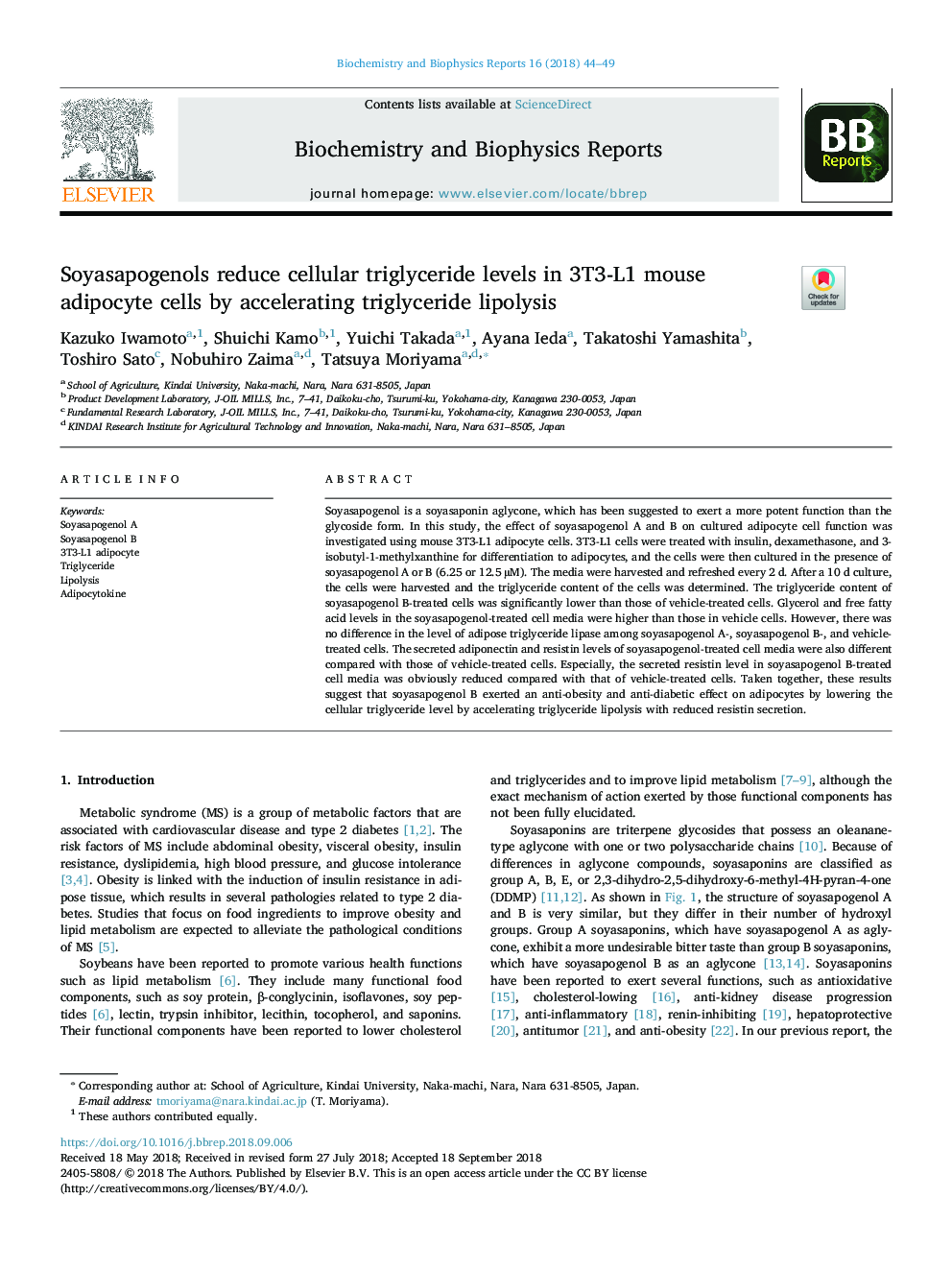| Article ID | Journal | Published Year | Pages | File Type |
|---|---|---|---|---|
| 11029401 | Biochemistry and Biophysics Reports | 2018 | 6 Pages |
Abstract
Soyasapogenol is a soyasaponin aglycone, which has been suggested to exert a more potent function than the glycoside form. In this study, the effect of soyasapogenol A and B on cultured adipocyte cell function was investigated using mouse 3T3-L1 adipocyte cells. 3T3-L1 cells were treated with insulin, dexamethasone, and 3-isobutyl-1-methylxanthine for differentiation to adipocytes, and the cells were then cultured in the presence of soyasapogenol A or B (6.25 or 12.5â¯ÂµM). The media were harvested and refreshed every 2 d. After a 10 d culture, the cells were harvested and the triglyceride content of the cells was determined. The triglyceride content of soyasapogenol B-treated cells was significantly lower than those of vehicle-treated cells. Glycerol and free fatty acid levels in the soyasapogenol-treated cell media were higher than those in vehicle cells. However, there was no difference in the level of adipose triglyceride lipase among soyasapogenol A-, soyasapogenol B-, and vehicle-treated cells. The secreted adiponectin and resistin levels of soyasapogenol-treated cell media were also different compared with those of vehicle-treated cells. Especially, the secreted resistin level in soyasapogenol B-treated cell media was obviously reduced compared with that of vehicle-treated cells. Taken together, these results suggest that soyasapogenol B exerted an anti-obesity and anti-diabetic effect on adipocytes by lowering the cellular triglyceride level by accelerating triglyceride lipolysis with reduced resistin secretion.
Related Topics
Life Sciences
Biochemistry, Genetics and Molecular Biology
Biochemistry
Authors
Kazuko Iwamoto, Shuichi Kamo, Yuichi Takada, Ayana Ieda, Takatoshi Yamashita, Toshiro Sato, Nobuhiro Zaima, Tatsuya Moriyama,
